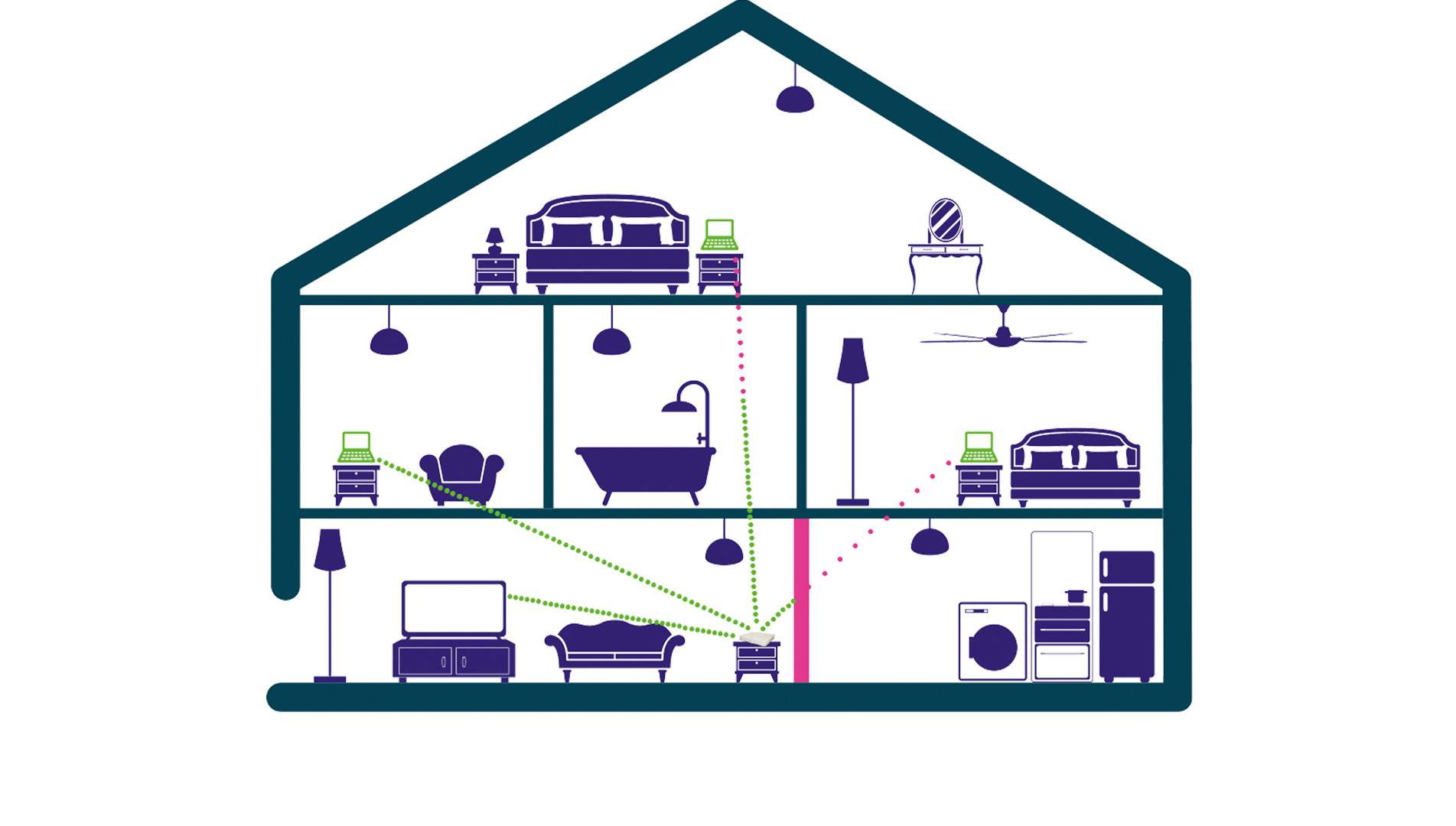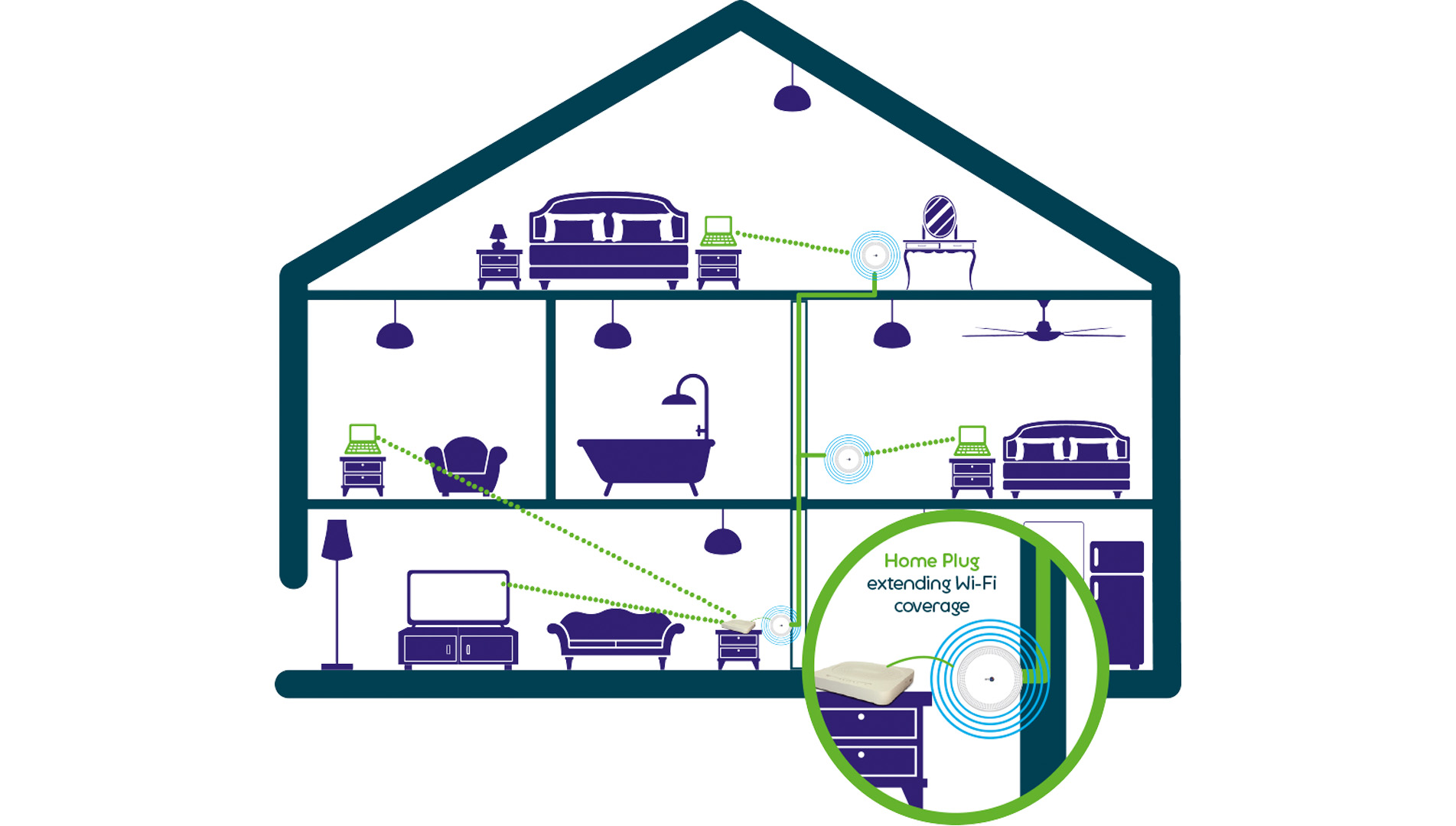- Manx Telecom
- Support
- Internet
- Fibre Broadband
- Fibre Broadband Top Tips
Quick Fixes
Try these 5 tips to improve your home broadband performance. Some of these may seem obvious, but some of the easiest remedies for fixing home broadband are often overlooked.
-
Set up is critical.
Check that any of your cables - including those on the back of your Router and any extension leads are untangled and plugged-in correctly.When it comes to extension leads, try to use a high-quality cable just long enough for your requirements. Ensure that there are no tangles as these can cause interference and impact your speeds.
-
Place your router in the optimal position in your property.
Put your Router near to where you use the internet the most, the further you are from your Router, the weaker your signal will be. This may not be possible depending on your set-up.Keep your Router in line of sight and try to avoid hiding it in a cupboard or on the floor, where the wi-fi signal will be obstructed
Try and position your Router in the centre of your home - you'll reduce the number of walls slowing down your signal, which means you can get better Wi-Fi in more places.
Move your Router away from the window – your Router broadcasts Wi-Fi in all directions and half of your signal will go outside, rather than your home.
Don’t put the Router behind your TV or near metal objects - they can reflect and disperse the signal.
-
Know your devices.
Performance and speed can be impacted by many things including the devices used to access the internet. If your Wi-Fi isn’t as fast as you expected, it might have nothing to do with your connection. Typically, the newer a device is, the faster the wireless speed it will support. For example, a smartphone from 2013 can handle around half the Wi-Fi speeds of a modern phone.With devices like smartphones, tablets and laptops being updated regularly, also consider upgrading your devices every few years.
-
How your broadband is being used.
Your speed is also affected by what your broadband is being used for. For instance, streaming services like Netflix or YouTube, online gaming and video conferencing use more of your broadband speed than checking Facebook, or sending an email.And since your connection is shared at home, the number of devices using your broadband at the same time can have an impact on how fast or slow it feels.
Find out what other members of your household are doing online before taking further action.
-
Restart your router.
As cliche as it sounds, turning your Router on and off can solve many minor issues with your broadband.Turn your Router off and wait around 10 seconds, and turn it on again. After a few minutes, the Router lights should turn green, which indicates your Router is working.
Restarting your devices will also help you get the best connection.
I've tried all of those, nothing has helped!
Interference from other devices
Materials and appliances in your home can cause signal degradation. Concrete, brick, stone, foil-backed insulation foam, some wallpapers and damp can all hinder radio waves.
Interference can also be caused by electrical devices that are in line of sight between your router and the device you wish to connect to your Wi-Fi. TV’s, baby monitors, microwaves, refrigerators, fish tanks and speakers can all cause electrical interference impacting your signal strength or Wi-Fi quality.
Interference from neighbouring WiFi networks
If you live in a terraced or semi-detached house, your neighbour's Wi-Fi network may be having an adverse effect on your own. For example, there may be instances where your neighbour’s router is closer to some of your devices on the first floor than your own router. This can severely degrade your Wi-Fi experience. Again, you can use Home Plugs or WiFi Extenders to extend your Wi-Fi range and optimise your experience.
I'm getting nowhere. Can I speak to someone?
Our Support team is available to help and can help talk you through making any adjustments when optimising your network.
If you have a problem with your Fibre performance, call our team on 624624.


